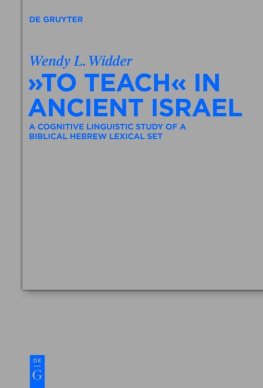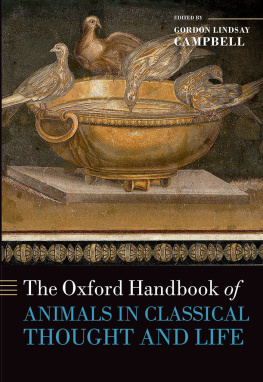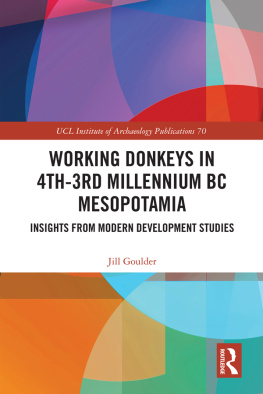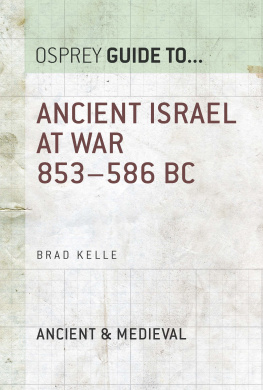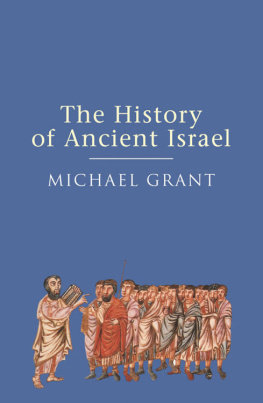
Animal Husbandry in Ancient Israel
Approaches to Anthropological Archaeology
Series Editor: Thomas E. Levy, University of California, San Diego
Editorial Board:
Guillermo Algaze, University of California, San Diego Geoffrey E. Braswell (University of California, San Diego)
Paul S. Goldstein, University of California, San Diego
Joyce Marcus, University of Michigan
This series recognizes the fundamental role that anthropology now plays in archaeology and also integrates the strengths of various research paradigms that characterize archaeology on the world scene today. Some of these different approaches include New or Processual archaeology, Post-Processual, evolutionist, cognitive, symbolic, Marxist, and historical archaeologies. Anthropological archaeology accomplishes its goals by taking into account the cultural and, when possible, historical context of the material remains being studied. This involves the development of models concerning the formative role of cognition, symbolism, and ideology in human societies to explain the more material and economic dimensions of human culture that are the natural purview of archaeological data. It also involves an understanding of the cultural ecology of the societies being studied, and of the limitations and opportunities that the environment (both natural and cultural) imposes on the evolution or devolution of human societies. Based on the assumption that cultures never develop in isolation, Anthropological Archaeology takes a regional approach to tackling fundamental issues concerning past cultural evolution anywhere in the world.
Published:
Archaeology, Anthropology and Cult
The Sanctuary at Gilat, Israel
Edited by Thomas E. Levy
Connectivity in Antiquity
Globalization as a Long Term Historical Process
Edited by ystein LaBianca and Sandra Arnold Scham
Israels Ethnogenesis
Settlement, Interaction, Expansion and Resistance
Avraham Faust
Axe Age
Acheulian Tool-making from Quarry to Discard
Edited by Naama Goren-Inbar and Gonen Sharon
New Approaches to Old Stones
Recent Studies of Ground Stone Artifacts
Edited by Yorke M. Rowan and Jennie R. Ebling
Prehistoric Societies on the Northern Frontiers of China
Archaeological Perspectives on Identity Formation and Economic Change during the First Millennium BCE
Gideon Shelach
Forthcoming:
Structured Worlds
The Archaeology of Hunter-Gatherer Thought and Action
Edited by Aubrey Cannon
Desert Chiefdom
Dimensions of Subterranean Settlement and Society in Israels Negev Desert (c. 45003600 BC) Based on New Data from Shiqmim
Edited by Thomas E. Levy, Yorke M. Rowan and Margie M. Burton
Ultimate Devotion
The Historical Impact and Archaeological Reflections of Religious Extremism
Yoav Arbel
Metal, Nomads and Cultural Contact
The Middle East and North Africa
Nils Anfinset
Animal Husbandry in Ancient Israel
A Zooarchaeological Perspective on Livestock Exploitation, Herd Management and Economic Strategies
Aharon Sasson
First published 2010 by Equinox, an imprint of Acumen
Published 2014 by Routledge
2 Park Square, Milton Park, Abingdon, Oxon OX14 4RN
711 Third Avenue, New York, NY 10017, USA
Routledge is an imprint of the Taylor & Francis Group, an informa business
Aharon Sasson 2008
All rights reserved. No part of this book may be reprinted or reproduced or utilised in any form or by any electronic, mechanical, or other means, now known or hereafter invented, including photocopying and recording, or in any information storage or retrieval system, without permission in writing from the publishers.
Notices
Practitioners and researchers must always rely on their own experience and knowledge in evaluating and using any information, methods, compounds, or experiments described herein. In using such information or methods they should be mindful of their own safety and the safety of others, including parties for whom they have a professional responsibility.
To the fullest extent of the law, neither the Publisher nor the authors, contributors, or editors, assume any liability for any injury and/or damage to persons or property as a matter of products liability, negligence or otherwise, or from any use or operation of any methods, products, instructions, or ideas contained in the material herein.
British Library Cataloguing-in-Publication Data
A catalogue record for this book is available from the British Library.
ISBN-13 978 1 84553 179 9 (hardback)
Library of Congress Cataloging-in-Publication Data
Sasson, Aharon.
Animal husbandry in ancient Israel : a zooarchaeological perspective on livestock exploitation, herd management and economic strategies / Aharon Sasson.
p. cm. -- (Approaches to anthropological archaeology)
Includes bibliographical references and index.
ISBN-13: 978-1-84553-179-9 (hb)
1. Bronze age--Israel. 2. Iron age--Israel. 3. Animal culture--Israel. 4. Domestication--Israel. 5. Animal remains (Archaeology)--Israel. 6. Israel--Antiquities. I. Title.
GN778.32.I75S37 2008
933--dc22
2007050538
Typeset by CA Typesetting Ltd, Sheffield
To my mother Victoria
My brother Joseph
And my daughters Shahar and Gal
For your support
Contents
We make a living by what we get, but we make a life by what we give (Winston Churchill).
Primary components of this book are based on my MA and PhD dissertations submitted to Tel Aviv University. My sincere thanks to Israel Finkelstein, Zeev Herzog, Tamar Dayan, Avi Perevolotsky, Simon Davis, Liora Kolska-Horwitz, Lazlo Bartosiewicz, Paula and Brian Hesse and Lily Singer-Avitz for their advice. Thank you to the staff of Institute of the Archaeology: Naama Scheftelowitz and Alexandra Shavit (library), Rodica Penchas and Yura Smertenko (illustrations), Pavel (Pasha) Shrago (photography), and Lena Benenson (GIS programming).
The book was written while I was a post-doctorate fellow at the University of California, San Diego. I wish to thank the Anthropology Department faculty and staff for their warm hospitality and especially Tom Levy for inviting me to write the book, for his advice and for generously lending me his office. Thank you to Adolfo Muniz, Yoav Arbel, Jana Fortier, Geoff Braswell, Robert McC. Adams, Exequiel Ezcurra, David Noel Freedman and Tal Golan for their help and fruitful discussions.
Many thanks to Haya Golan-Sasson for generating the sites maps. Special thanks to my precious daughters, Shahar and Gal, for their help in typing in data from many references cited in this book, for their help in designing the book cover and for their never-ending support.
And He said unto me: Son of man, can these bones live? And I answered: O Lord GOD, Thou knowest (Ezekiel 37:3).
The book demonstrates various methodologies to make these bones live. It is aimed at diverse crowds. While it provides an extensive data on animal husbandry in the Southern Levant for the professional zooarchaeologist, it is also aimed at the professional archaeologists and readers that are interested in the archaeology of the Bronze and Iron Age. For this reason, the book includes introductory sections that precede the zooarchaeological discussions. These sections provide to the non-zooarchaeologist brief details on zooarchaeological and taphonomic methods, the GIS methodology, models of animal husbandry and an extensive reference source on these issues.


